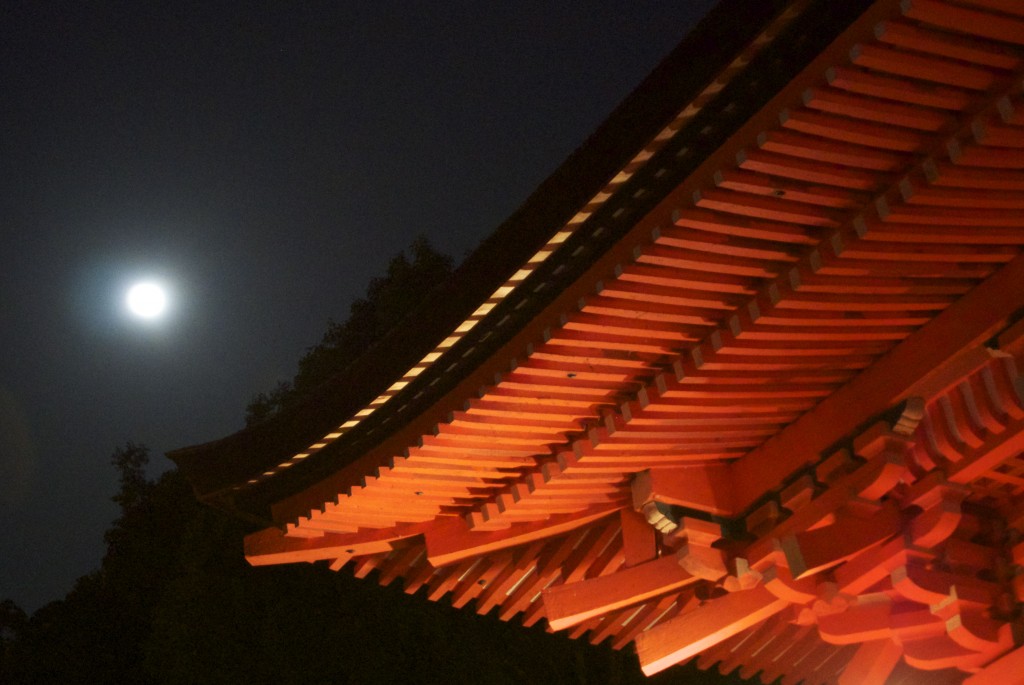
Full moon rising over Shimogamo Shrine
Tonight was full moon in Kyoto – the fullest of the year, in fact. The September moon has long been an object of special attention in Japan, and the moon-viewing parties of the past were a time for poetry and reflection. Drinking saké with friends and admiring the beauty of the plump, bright orb was a rite of the changing season as summer evenings slipped into early autumn.
A harvest Moon!
And on the mats-
Shadows of pine boughs.
–Takarai Kikaku (1661-1707)
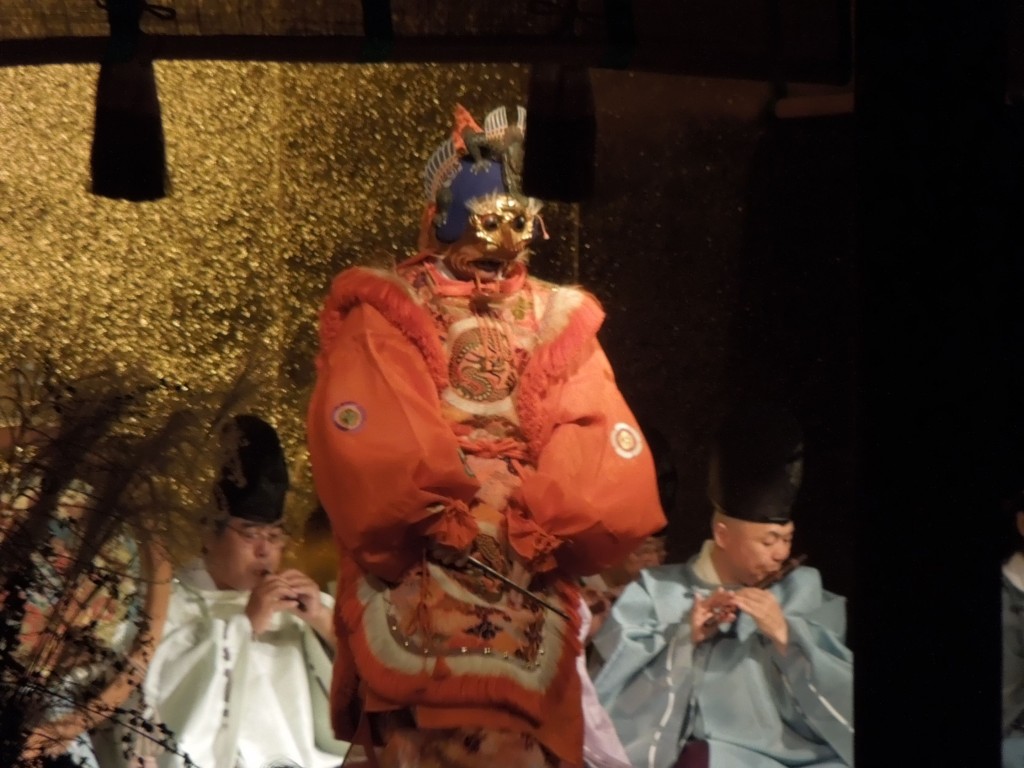
Kagura dance - A Chinese king with a mask ready for battle
The tradition is kept up in many places, one of them being Shimogamo Jinja here in Kyoto. It’s a delightful affair, lasting from 5.30-9.00 with a full programme of events taking place within the shrine compound. On one side is an ongoing tea ceremony; on the other a stage for recitals of music and dance. Beyond the stage, and from behind the trees of the Tadasu woods, slowly spreads the silvery glow of the rising moon.
On the programme this evening was shakuhachi, flute, koto, kagura dance, then shakuhachi and koto again, ending with a classic dance that told of a Chinese king who had beautiful features but when he fought in battle he wore a mask in order to look more frightening to his enemies.
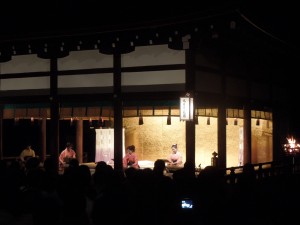
Koto players on stage at Shimogamo Shrine
On the various stalls were green tea, sweets, souvenir rice crackers and Mitarashi dango (dumplings). [Mitarashi is the name given to streams that run through shrine precincts and are used for purification.] At the end people carried away plants and pampas grass too that had been used at the shrine to place in their homes for protection.
It was an altogether wonderful occasion that gave one pause for thought about the wonder of the universe and the passing of the season. It’s part of what makes Shinto so special at times. In the harbouring of tradition and the enjoyment of nature can be felt both the ancestral and animist sides of the religion at their best.
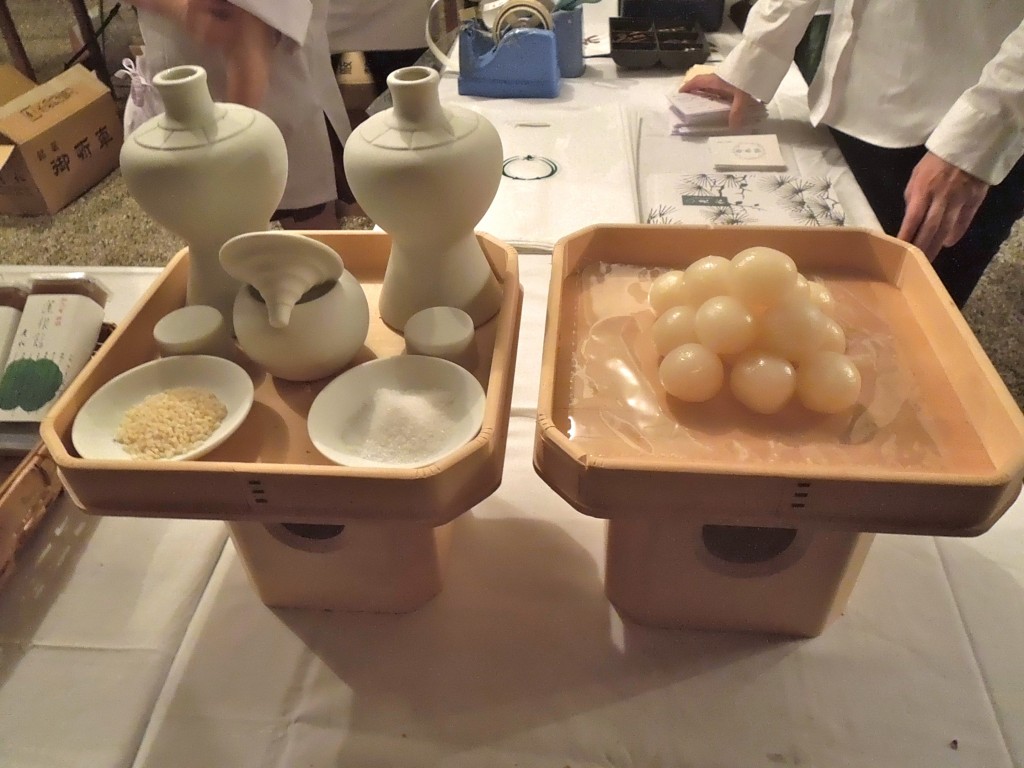
Set of full moon ritual offerings, including 'tsukimi dango' (moon-viewing sweet dumplings)
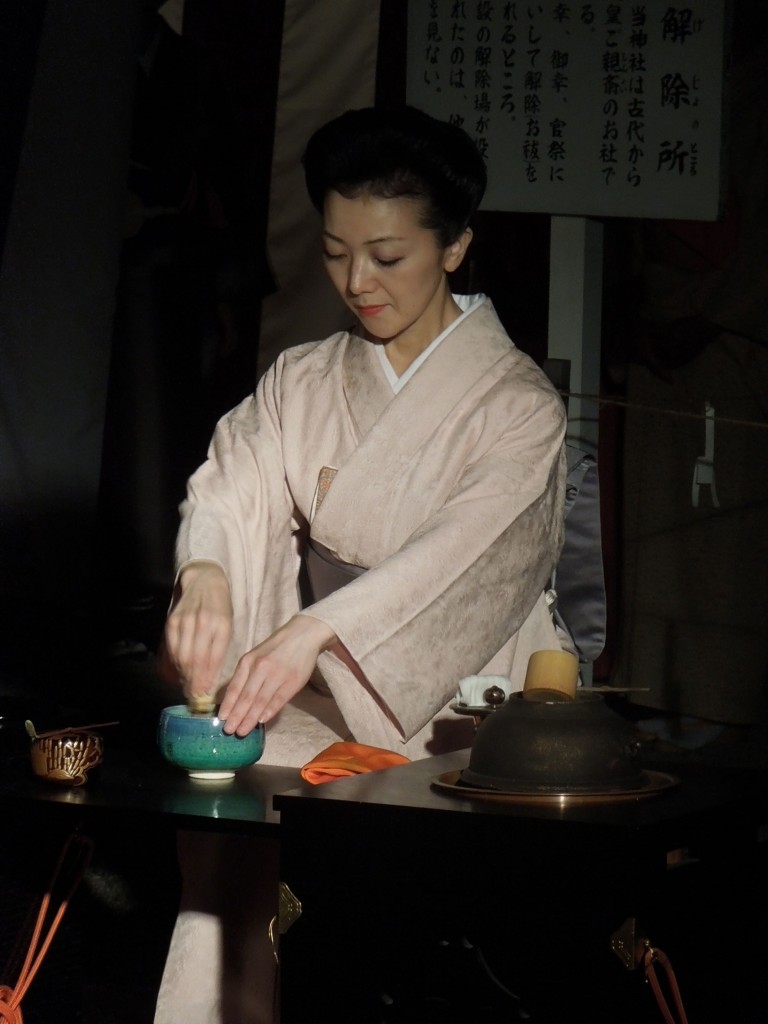
Stirring the tea so that miko can present it to participants
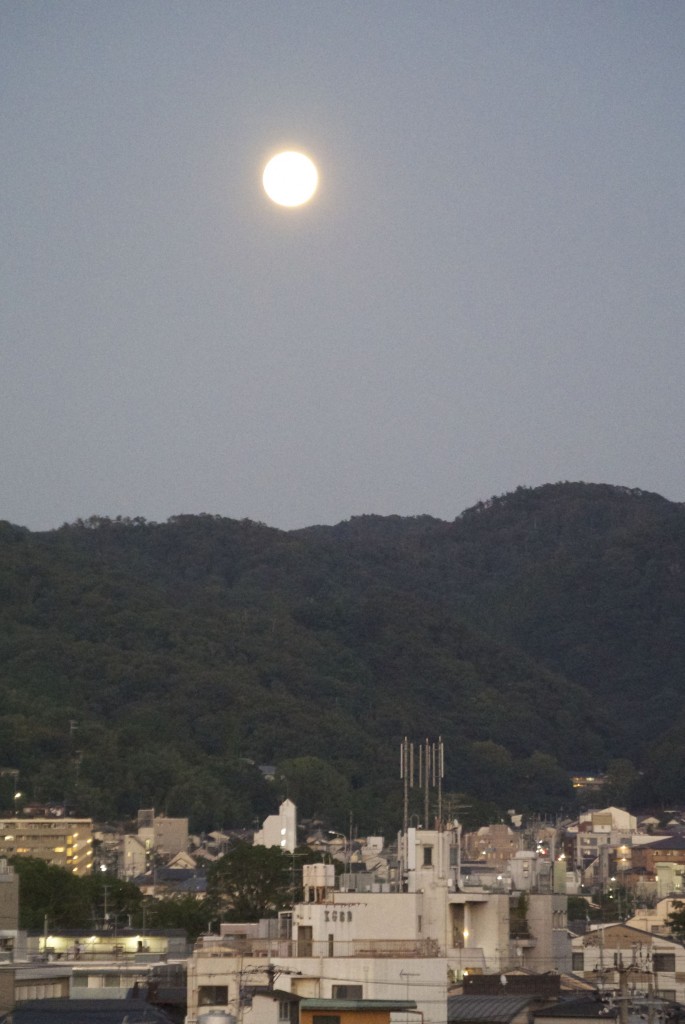
Full moon over Kyoto's eastern hills (taken from my veranda)

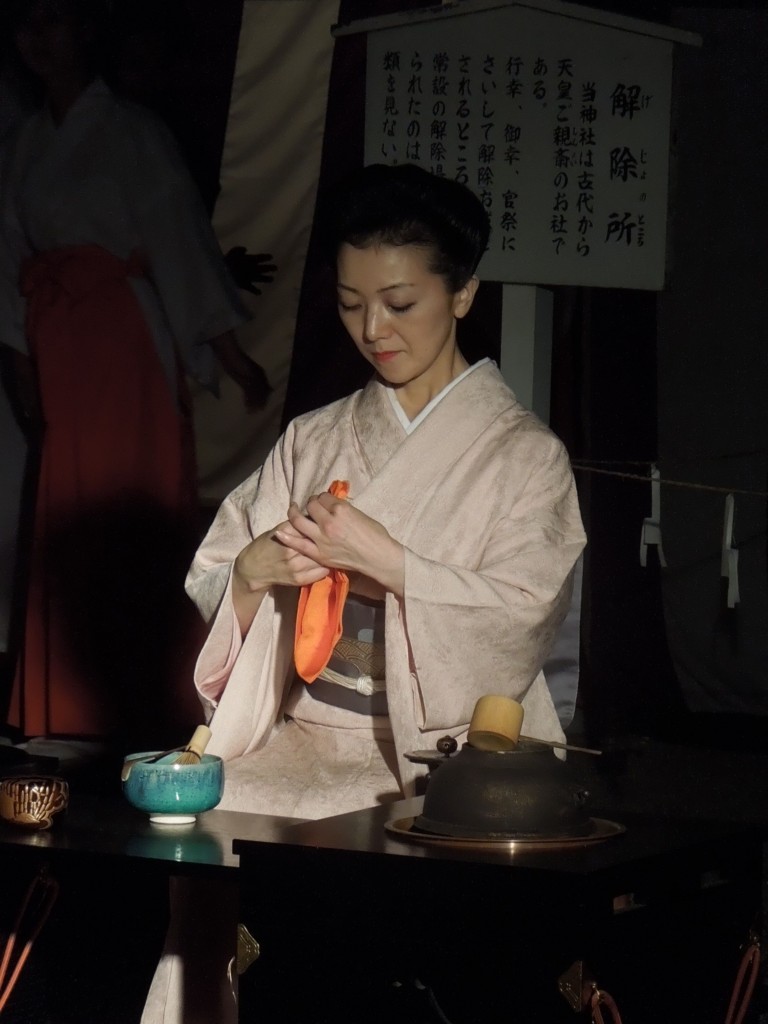
Leave a Reply